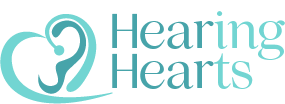+918042756325

This is your website preview.
Currently it only shows your basic business info. Start adding relevant business details such as description, images and products or services to gain your customers attention by using Boost 360 android app / iOS App / web portal.
Description
VNG (Video Nystagmography) balance testing in the context of hearing aids involves assessing the vestibular system and balance function, particularly for individuals with hearing issues. Here’s an overview of how this testing is typically conducted and its relevance: Purpose of VNG in Hearing Aid Evaluation Assessing Balance Function: VNG testing helps evaluate the vestibular system's role in maintaining balance, which can be affected by hearing loss or auditory issues. Identifying Underlying Conditions: It can help identify vestibular disorders that may contribute to balance problems, which might influence hearing aid selection or fitting. Comprehensive Assessment: Integrating VNG results with audiometric data provides a more complete picture of a patient’s auditory and vestibular health. VNG Testing Procedure Calibration: The patient is fitted with special goggles that track eye movements while they perform specific tasks. Test Types: Oculomotor Testing: Evaluates the ability to move eyes smoothly and accurately. Vestibular Testing: Assesses the responses of the vestibular system to stimuli, including caloric testing or positional testing. Observation: Eye movements are recorded and analyzed to detect abnormalities that might indicate vestibular dysfunction. Implications for Hearing Aids Fitting and Adjustment: Understanding a patient's vestibular status can inform the fitting of hearing aids, especially in patients with balance issues. Patient Education: Educating patients about the relationship between hearing loss and balance can help them manage expectations and improve adherence to hearing aid use. Rehabilitation Strategies: Results may lead to recommendations for vestibular rehabilitation, which can complement the use of hearing aids. Conclusion Incorporating VNG balance testing into the evaluation process for hearing aids ensures a holistic approach to patient care, addressing both auditory and balance concerns.

